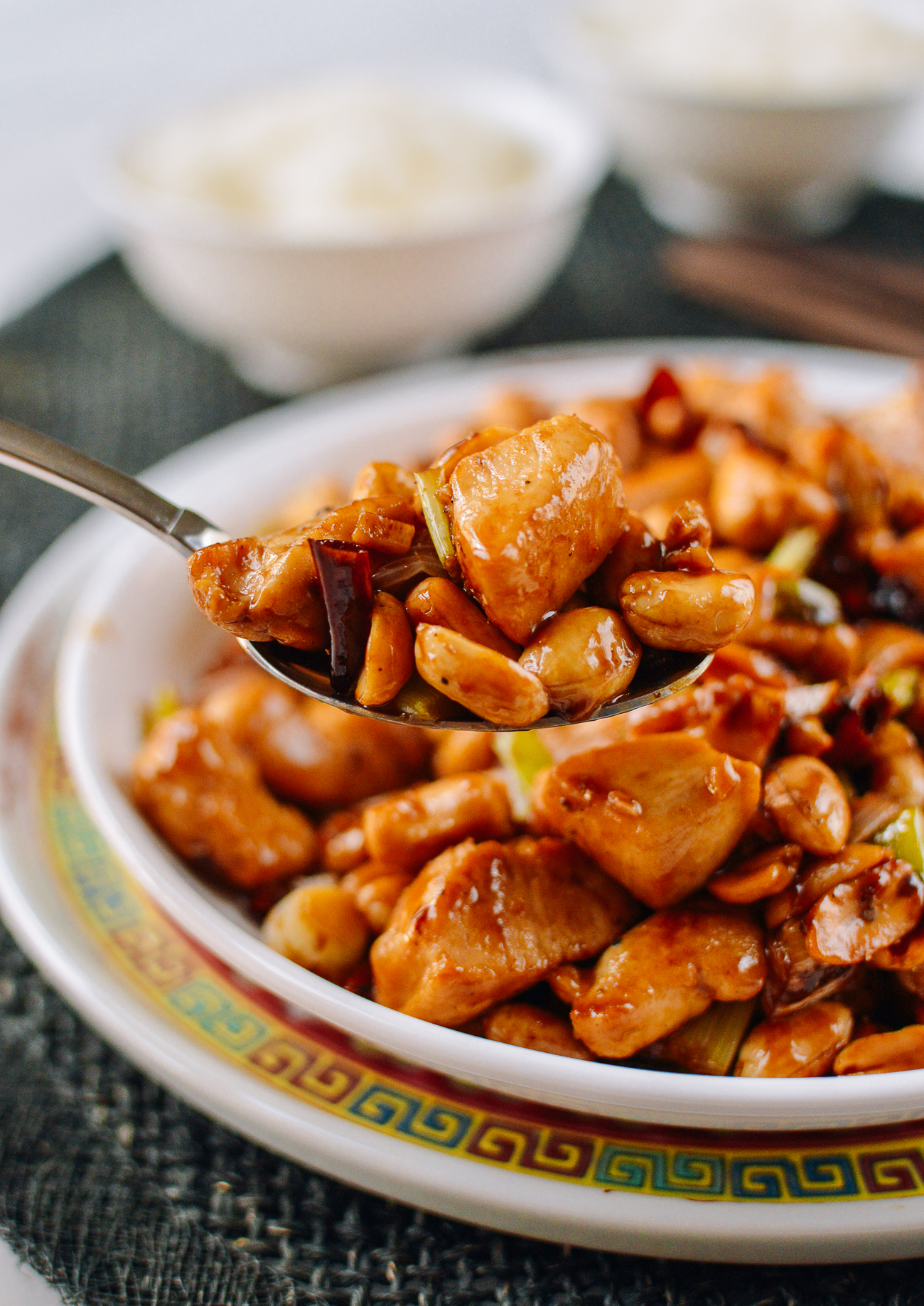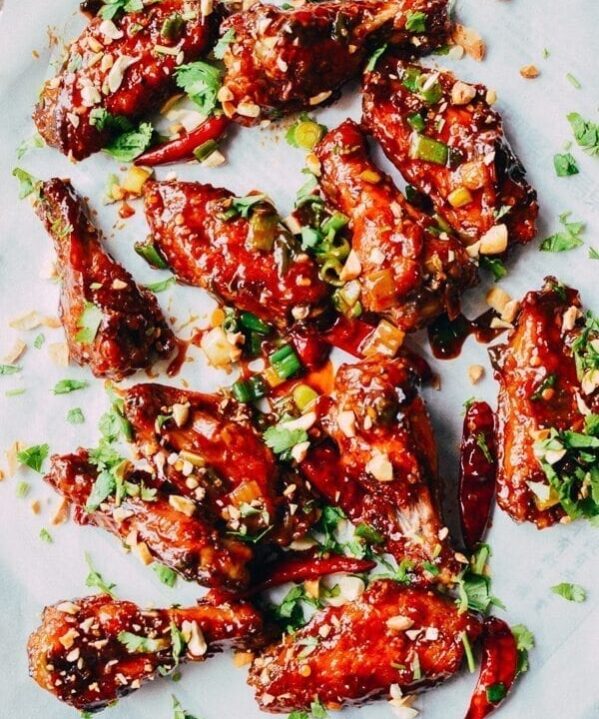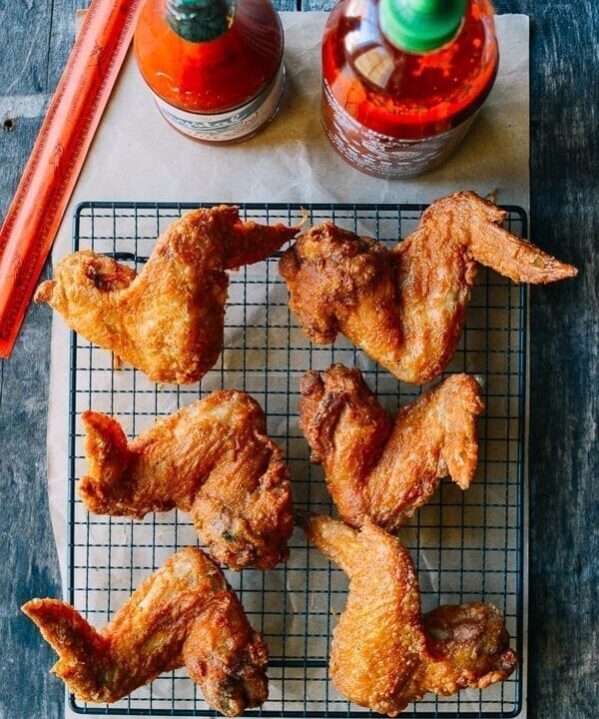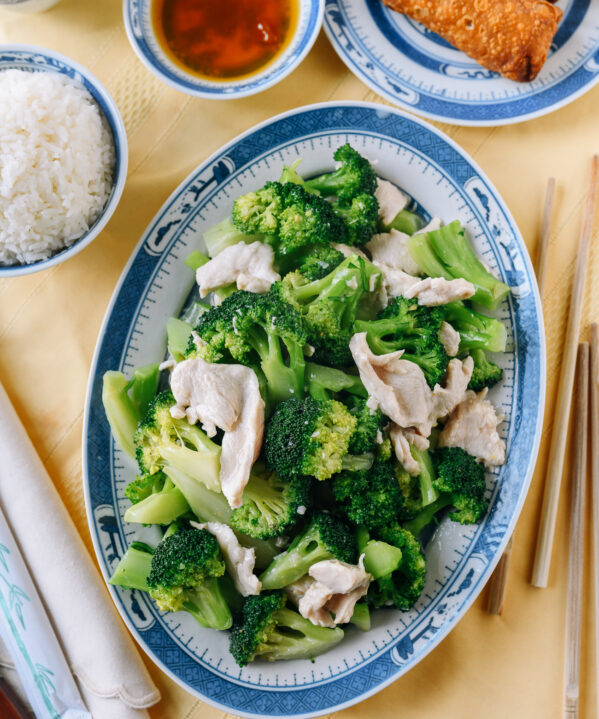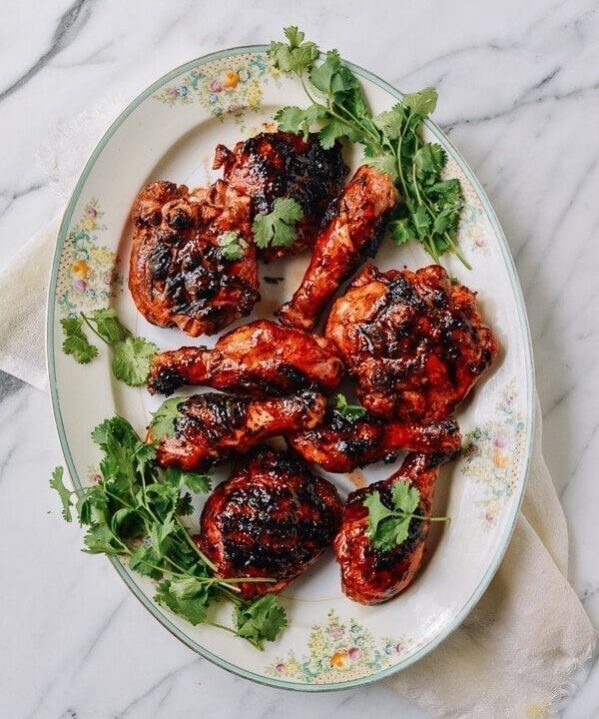Kung pao chicken exists both in the traditional Chinese repertoire and Americanized takeout menus alike. When we lived in Beijing, I was actually surprised to see how popular Kung Pao Chicken was among restaurant goers.
At certain restaurants that featured family-style cooking, I’d often see kung pao chicken on one out of every three tables. Chopsticks would work hard to grab at the small bite-sized pieces of chicken. And trust me, when the dish was “hot-off-the-wok” good, those chopsticks were moving faster.
Note: While this recipe was originally published in February 2015, we’ve re-tested it and updated it with new photos and clearer instructions. We’ve also included a recipe video! Happy to report the recipe itself is the same, and still as good as ever.
NOTE!
If you’d like to try a vegan version of kung pao, here are our recipes for kung pao tofu and kung pao mushrooms!
If you’re allergic to peanuts, which is a key ingredient in kung pao chicken, try our Cashew Chicken recipe instead!
What is Kung Pao Chicken?
Kung Pao Chicken is a dish featuring small pieces of diced chicken, peanuts, and dried red chili peppers. While the dish originated in Sichuan province, its fame brought it to other provinces as well, each with their own regional variation and flavor.
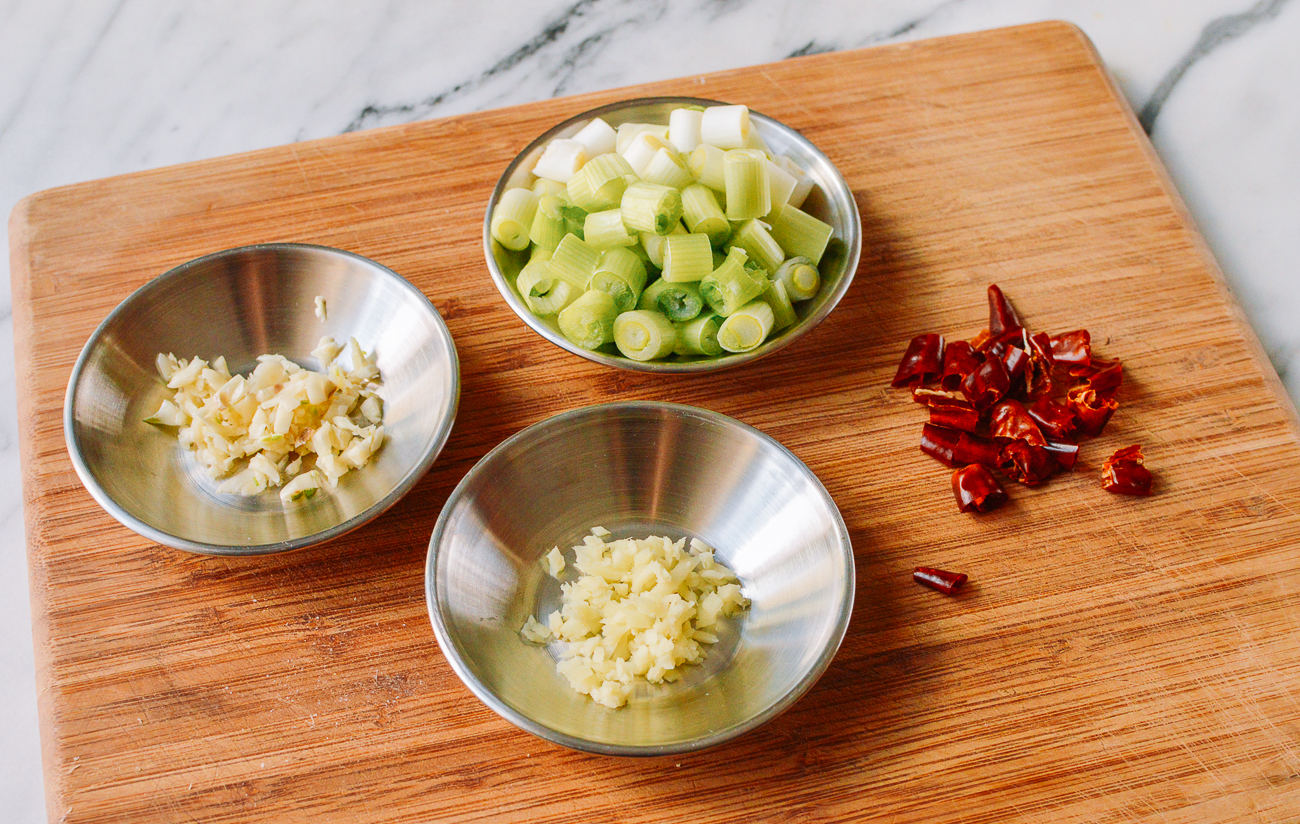
The dish has also made its way out of China, and remains a common sight on Chinese takeout menus in countries around the world.
There are good reasons why everyone loves kung pao chicken. It’s got so many flavors going on: tangy, sweet, and salty with a hint of heat. The art is putting in the right amount of each ingredient to come up with that winning flavor combination.
It’s actually a relatively easy dish to make at home, and my goal was to make a restaurant-quality kung pao chicken recipe. Try it for yourself to see if I’ve succeeded!
Kung Pao Chicken Recipe: Instructions
1. Start by roasting the peanuts:
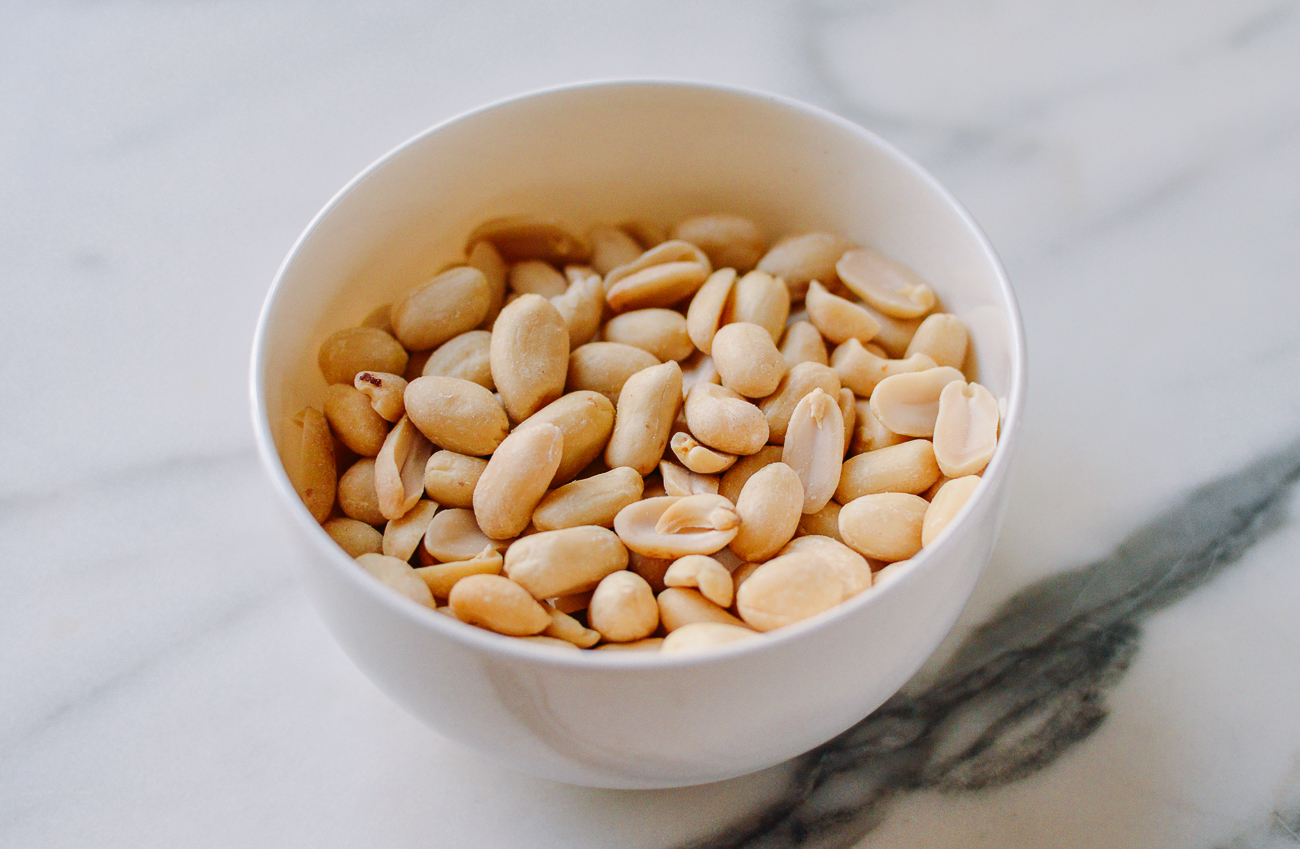
Heat a teaspoon of oil in a wok or pan over medium heat and add a cup of raw shelled peanuts. Stir constantly (or they’ll burn) for 3 minutes. Turn off the heat and stir for another minute using the residual heat in the wok.
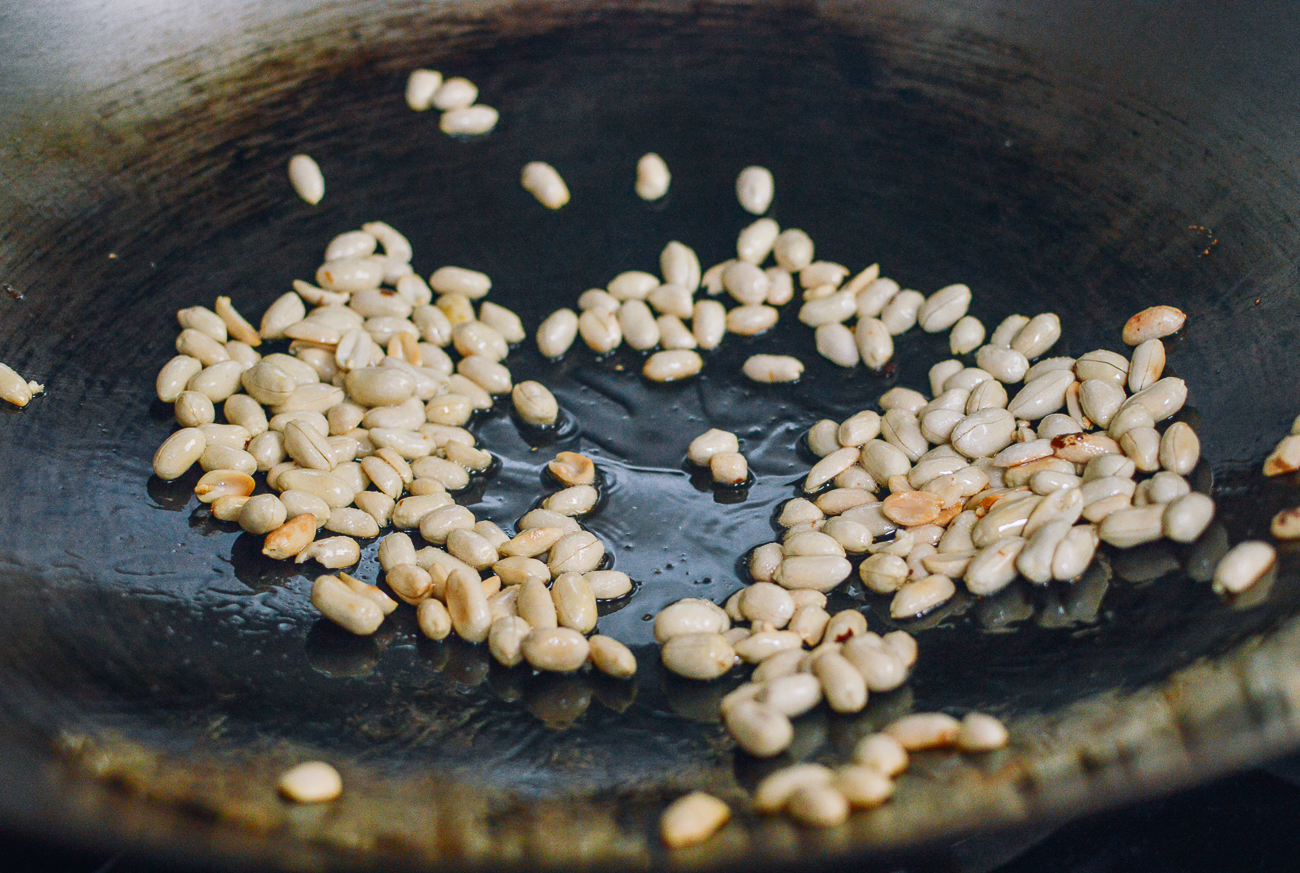
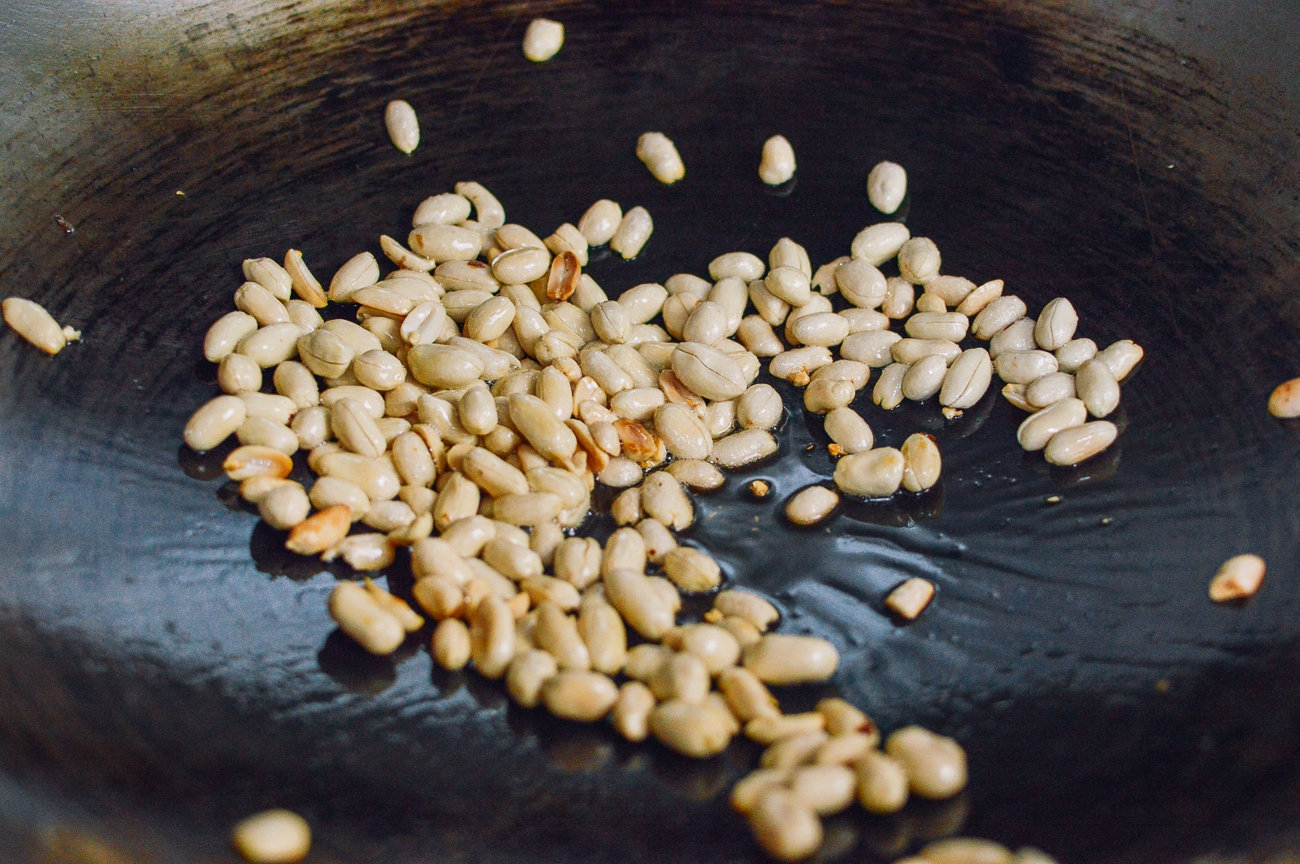
Set aside to cool. They will turn crunchy once they’re cooled completely.
Alternatively, you could skip this step and simply use shelled roasted peanuts!
2. Marinate the chicken:
Combine the chicken breast (you could also use boneless skinless chicken thighs) with 1 teaspoon each of oil, cornstarch, and Shaoxing wine, 1/8 teaspoon salt, and a pinch of white pepper. Set aside to marinate for 20 minutes. For more information and preparing chicken for stir fries, see Bill’s post on Chicken Velveting 101.

3. Prepare the sauce:
In a small bowl, mix together light soy sauce, dark soy sauce, rice wine vinegar, sugar, water, and cornstarch, and set aside.
4. Grab the rest of your ingredients:
- 3 tablespoons oil
- 3 cloves garlic, smashed and sliced
- 2 thin slices ginger, minced
- 2 dried red chilies, deseeded and chopped (these can be quite spicy, so adjust according to your own tastes)
- 1/2 teaspoon Sichuan peppercorn powder
- 6 scallions (green onions), white portions only, cut into 3/4-inch/2cm pieces
5. And you’re ready to cook kung pao chicken:
Heat 2 tablespoons oil in a wok or large skillet over high heat. Sear the chicken, remove from the wok to a bowl, and set aside.
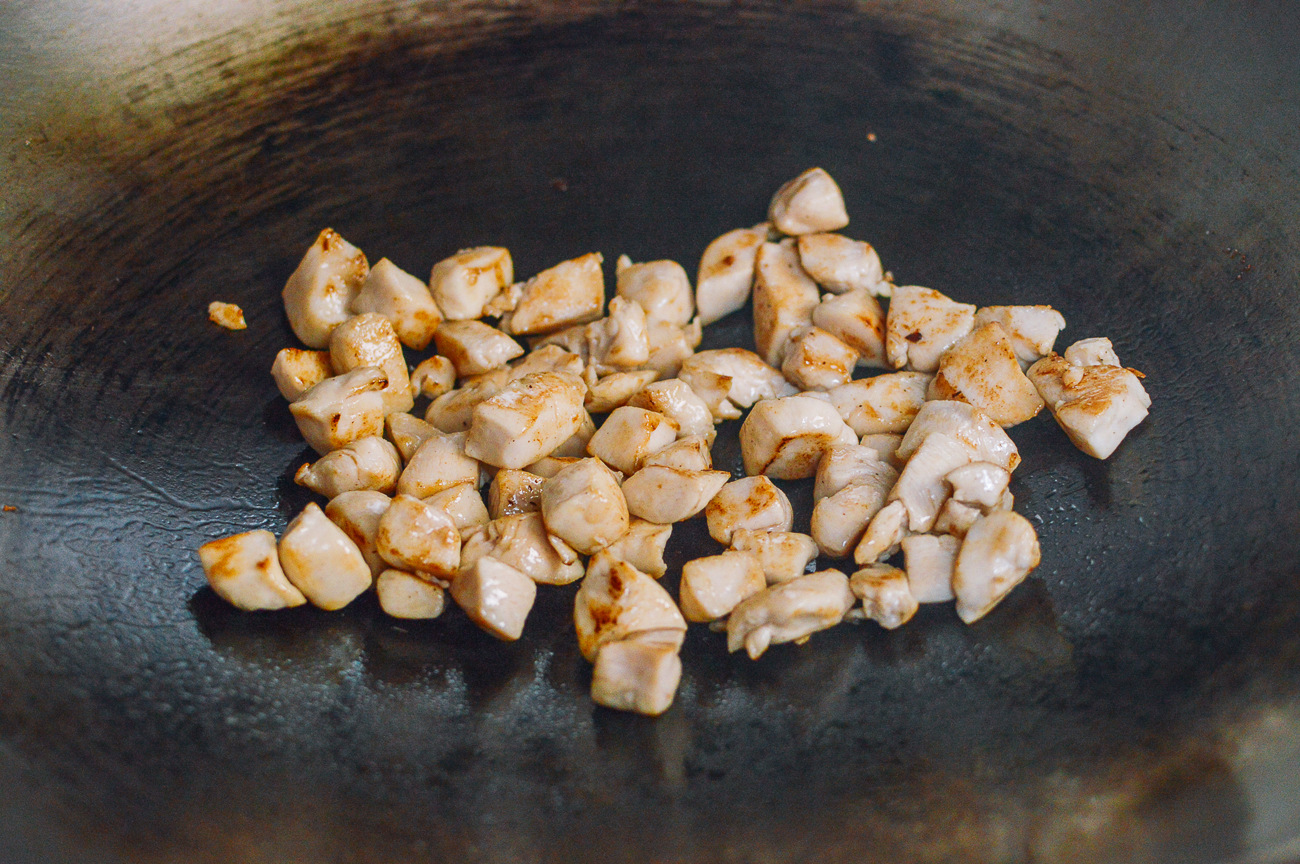
Turn the heat to low and add another tablespoon oil. Add the garlic, ginger, chilies, Sichuan peppercorn powder, and scallions. Cook for a minute or two until fragrant.
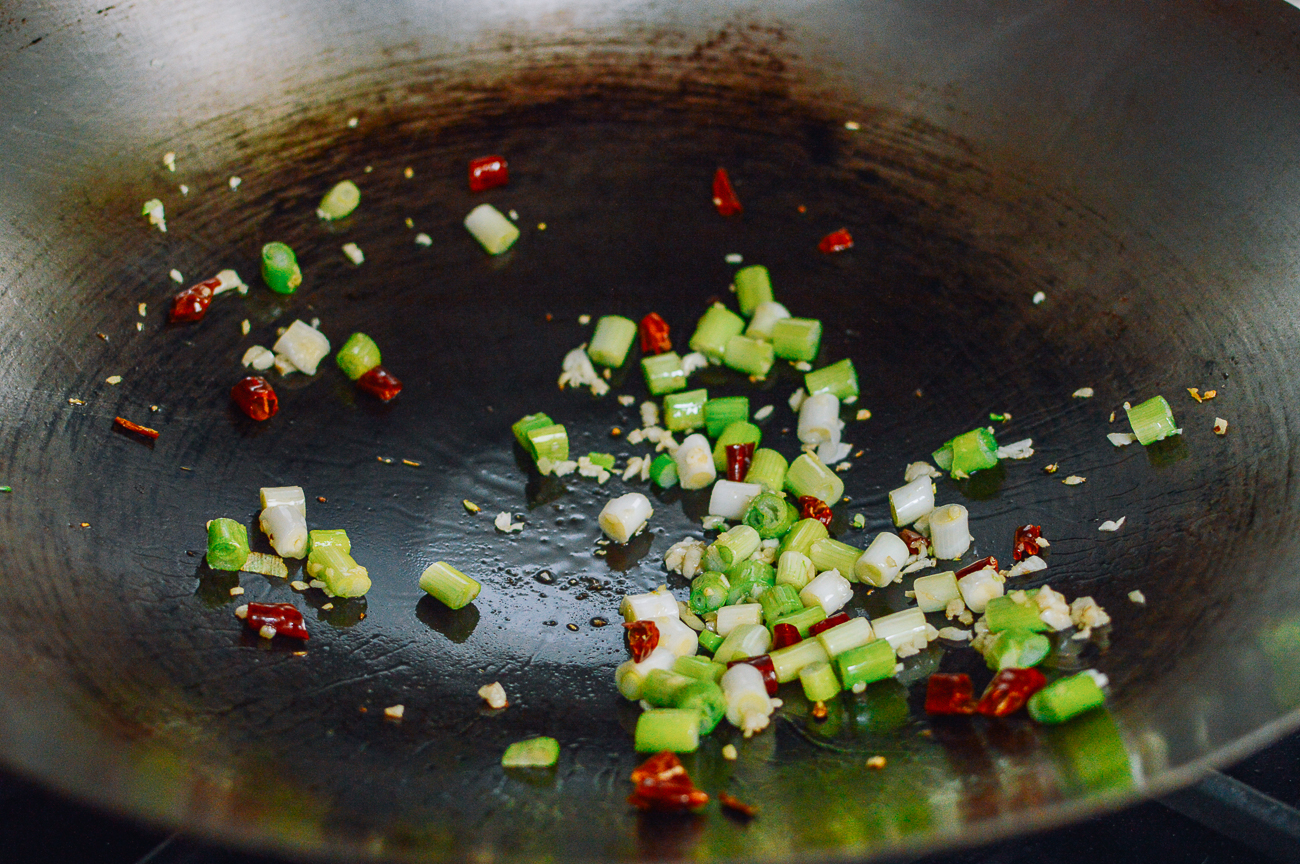
Add the chicken back to the wok. Turn up the heat to high and stir-fry for a minute.
Then stir up your prepared sauce (the cornstarch will have settled to the bottom, so make sure it’s well incorporated).
Add the sauce to the wok and stir-fry for another minute. The sauce should thicken very quickly.
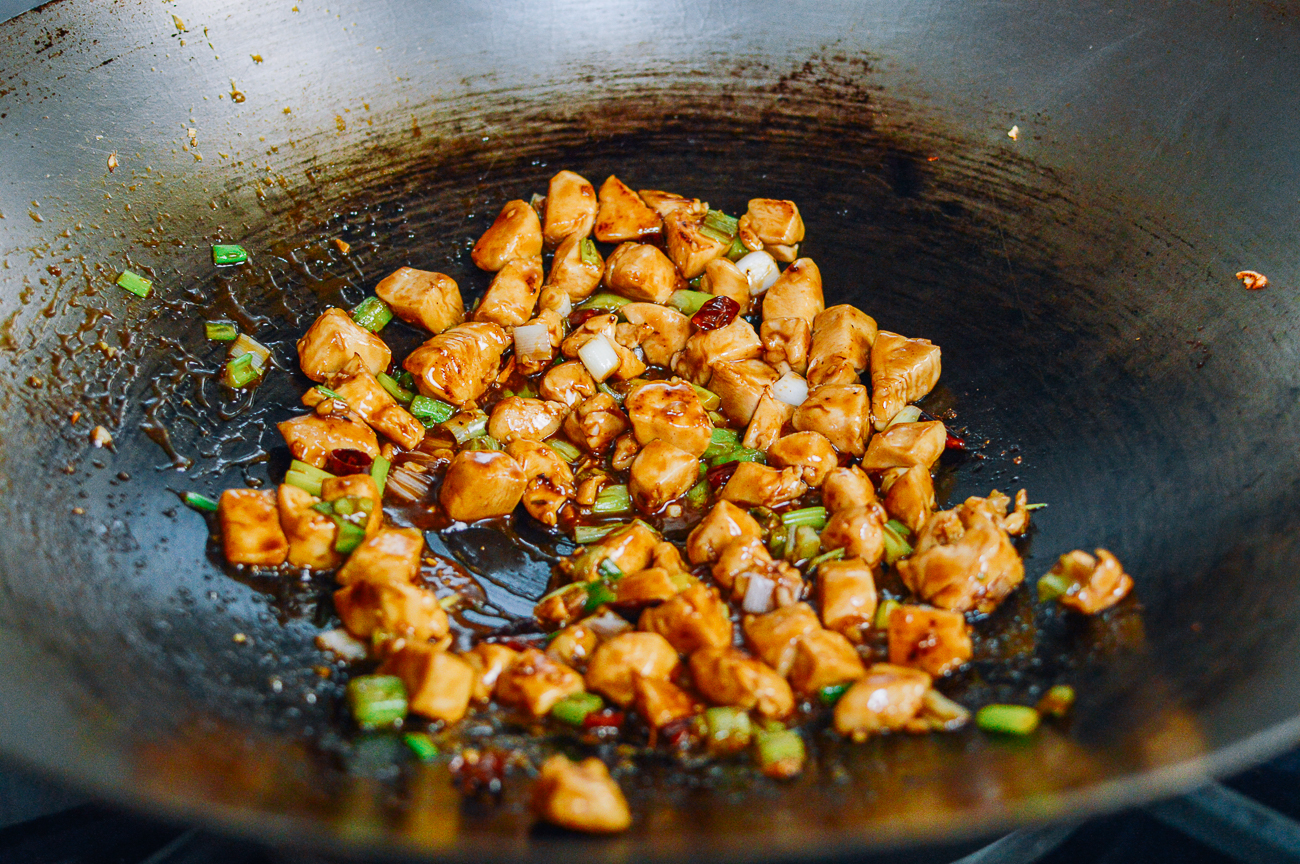
Finally, add the peanuts.
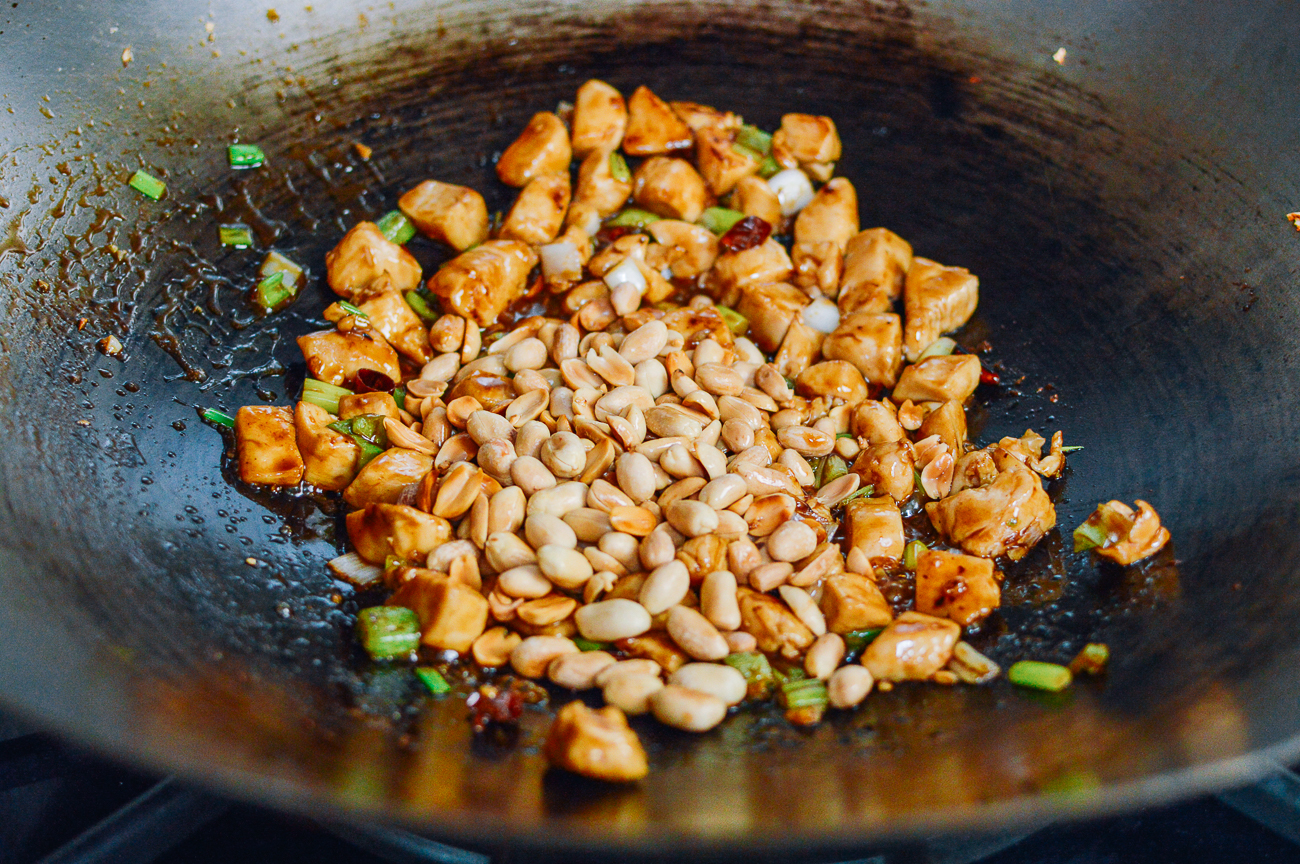
Give everything a final stir and serve.
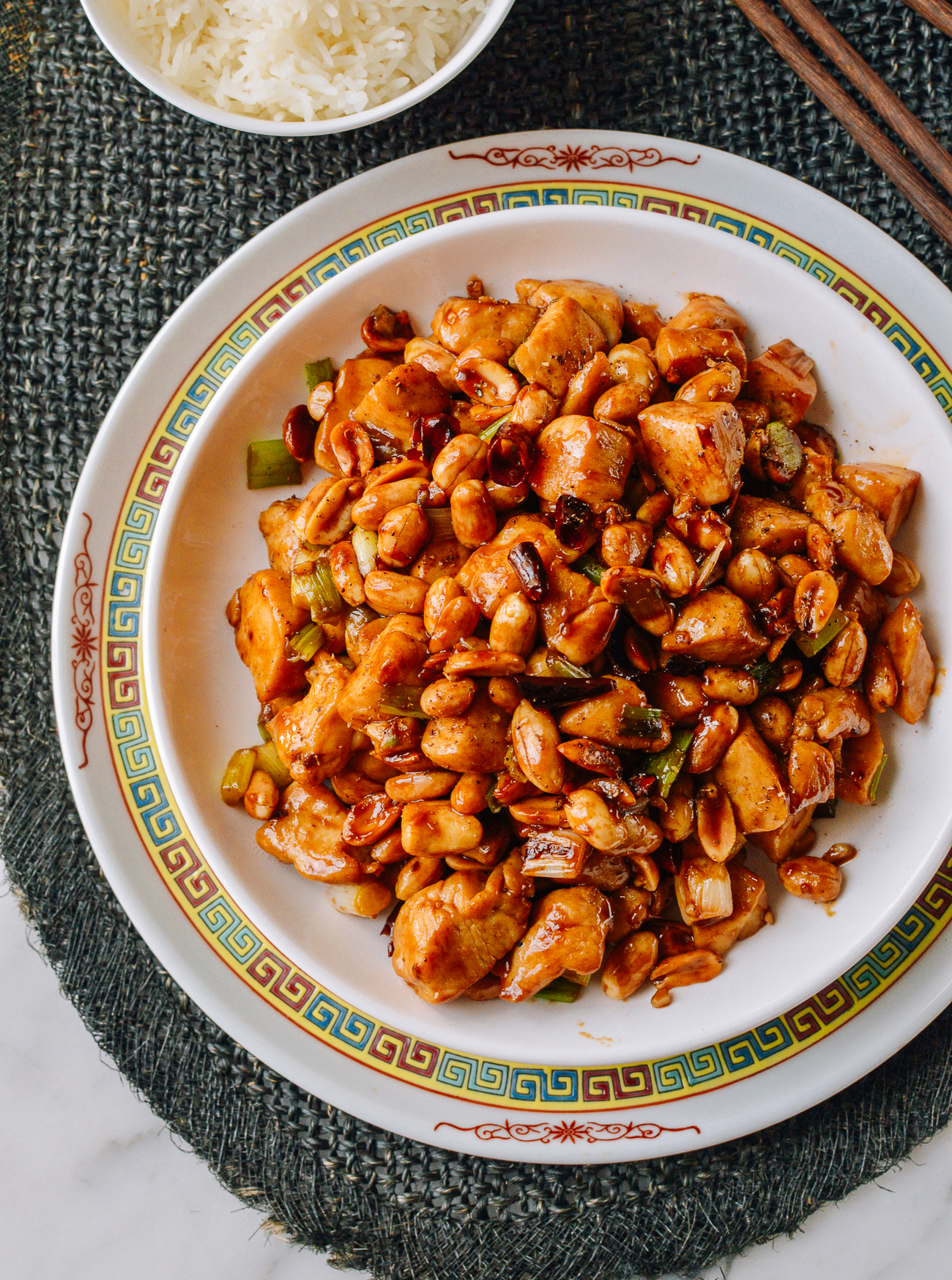
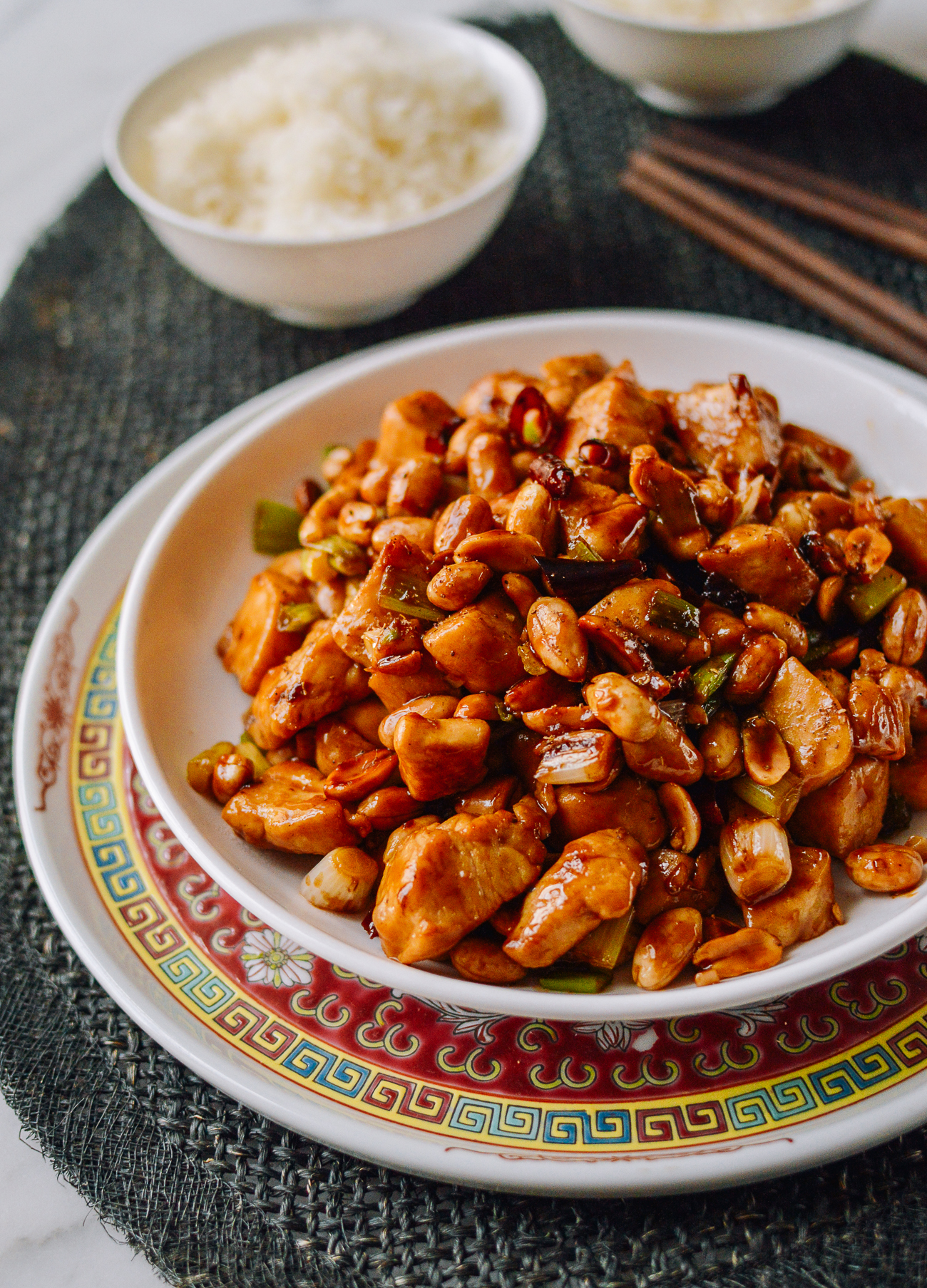
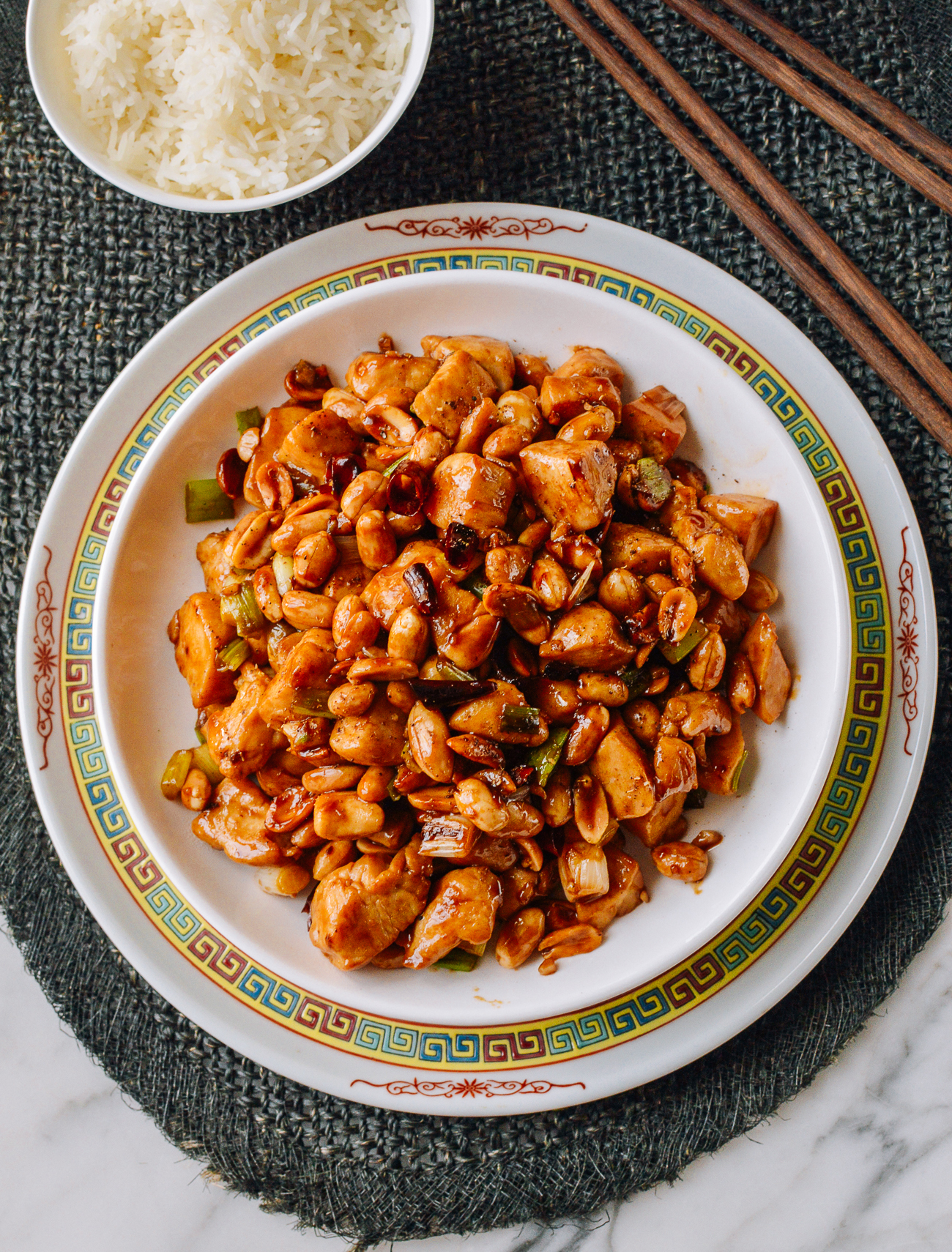
Watch video!
For a twist on this Kung Pao Chicken recipe, try our oven fried Kung Pao wings, or vegan/vegetarian versions: kung pao tofu and kung pao mushrooms.
Kung Pao Chicken Recipe – Chinese Restaurant Quality
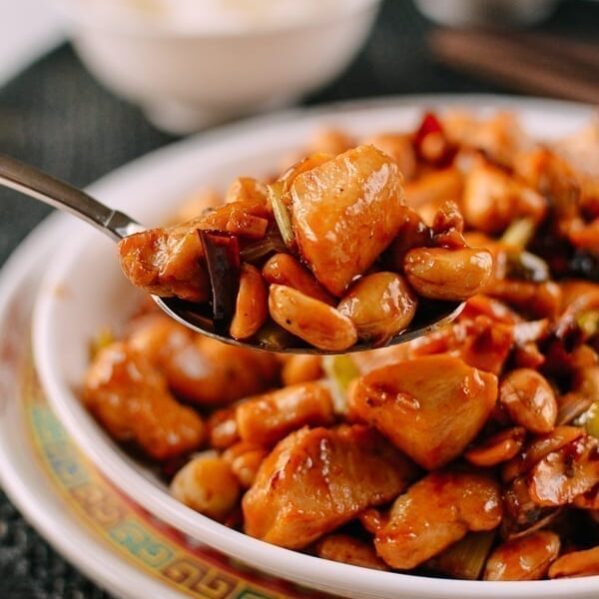
Ingredients
To roast the peanuts (can also substitute roasted shelled peanuts and skip this step!):
- 1 teaspoon vegetable oil
- 1 cup raw peanuts (shelled, with or without the skin)
To marinate the chicken:
- 12 oz. chicken breast (cut into 3/4-inch/2cm cubes)
- 1 teaspoon vegetable oil
- 1 teaspoon cornstarch
- 1 teaspoon shaoxing wine
- 1/8 teaspoon salt
- 1 pinch white pepper
To prepare the sauce:
- 1 tablespoon light soy sauce
- 1/2 teaspoon dark soy sauce
- 1 tablespoon rice wine vinegar
- 1 teaspoon sugar
- 3 tablespoons water
- 1 teaspoon cornstarch
The rest of your ingredients:
- 3 tablespoons oil
- 3 cloves garlic (smashed and sliced)
- 2 thin slices ginger (minced)
- 2 dried red chilies (deseeded and chopped; these can be quite spicy, so adjust according to your own tastes)
- 1/2 teaspoon Sichuan peppercorn powder
- 6 scallions (white portions only, cut into 3/4-inch/2cm pieces
Instructions
- Heat a teaspoon of oil in a wok over medium heat and add a cup of raw shelled peanuts. Stir constantly (or they’ll burn) for 3 minutes. Turn off the heat and stir for another minute using the residual heat in the wok. Set aside to cool. They will turn crunchy once they’re cooled completely. You can also skip this step and use already roasted shelled peanuts.
- Marinate the chicken. Mix together the chicken with all the marinade ingredients in a bowl and set aside for 20 minutes.
- Prepare the sauce. Mix together all the sauce ingredients in a medium bowl and set aside.
- Heat 2 tablespoons oil in a wok over high heat. Sear the chicken, remove from the wok to a bowl, and set aside.
- Turn the heat to low and add another tablespoon oil. Add the garlic, ginger, chilies, Sichuan peppercorn powder, and scallions. Cook for a minute or two until fragrant.
- Add the chicken back to the pan and turn up the heat to high. Stir-fry for a minute and then use your finger to stir up your prepared sauce (the cornstarch will have settled to the bottom, so make sure it’s well incorporated). Add the sauce to the wok and stir-fry for another minute. The sauce should thicken very quickly.
- Finally, add the peanuts. Give everything a final stir and serve.
